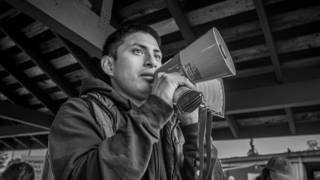
A man with lesions and lumps the size of chickpeas on his hands and feet. A woman wasting away, warts and sores covering her palms and soles of her feet and dark spots speckling the skin of her chest. An incessant itching all over the body that turns to dull pain.
This isn’t Chernobyl. It isn’t Bhopal. It’s Bangladesh, where tens of thousands of Bangladeshis show the signs of what the World Health Organization calls the “largest mass poisoning of a population in history.” The poison is arsenic and its in the water that some 35 million Bangladeshis drink. After several years of drinking water from infected wells, it leads to cancer of the liver, lung, bladder or kidney.
The water in some wells is 76 times the limit on levels of arsenic set by the World Health Organization. But thanks to the inefficiency of the government and the World Bank, most of the country’s estimated 11 million wells have still not been tested.
For two decades, the Bangladeshi government and UNICEF sponsored well drilling programs to wean the nation from pond water, often an incubator for lethal disease. They installed tube wells to tap into underground water sources. But no one tested these sources for arsenic.
As far back as 1998, Bangladeshi government officials knew of an encroaching crisis. But they did nothing. In the mid-1990’s, Bangladeshi officials finally admitted that another tragedy was unfolding. In 1998, the World Bank lent the government $32.4 million to act on the emergency. Every tube well was to be tested. Safe sources of water were to be provided. But critics charge that the government and the World Bank have become tangled in the bureaucratic inefficiencies. And the race against time has gone badly.
Today we are going to talk to a roundtable of Bangladeshi medical officials, arsenic experts, and environmentalists to talk about what could be the worst health crisis since Chernobyl.
Guests:
- Dr Quazi Quamruzzamann, Founder and Chairperson of the Dhaka Community Hospital Trust and professor of Pediatric Surgery at the Bangladesh Institute of Child Health.
- Han Heijnen, environmental health advisor on Bangladesh for the World Health Organization who works in Dhaka, the capital of Bangladesh.
- Richard Wilson, Harvard Department of Physics Faculty and co-author of “Risk/Benefit Analysis: Nuclear, Chemical and other Risks.”
- Dr. Dipankar Chakraborty, head of environmental studies at Jadavpur University, Calcutta.
- Bozena Michalowska, lawyer for the injured Bangladeshis who are suing the British Geneological Society.
Related links:











Media Options